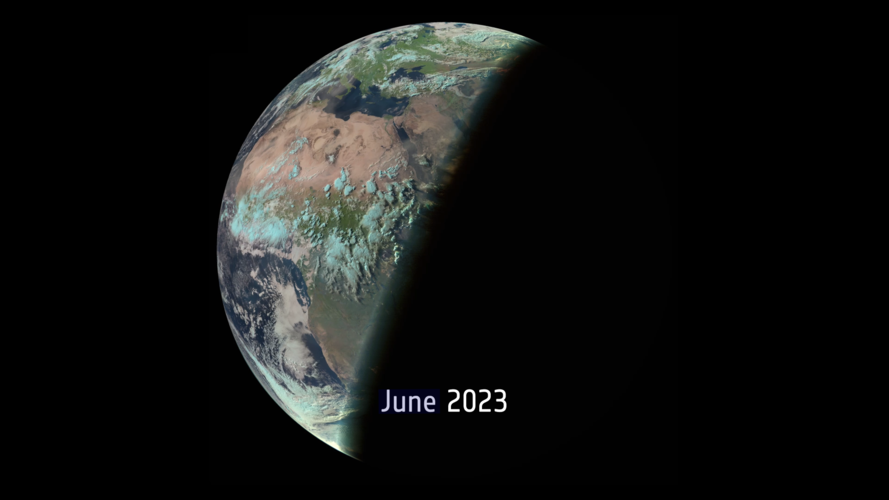
Copernical Team
Laying the foundation for lunar base construction; elucidating lunar soil-microwave interactions
 KICT Studies Microwave Sintering of Lunar Soil for Moon Base Construction
NASA's Artemis program aims to build a lunar base, but transporting construction materials from Earth to the Moon is expensive. To overcome this, researchers are exploring the use of local materials like lunar soil. One method being studied is microwave sintering, which solidifies lunar regolith without melting it. T
KICT Studies Microwave Sintering of Lunar Soil for Moon Base Construction
NASA's Artemis program aims to build a lunar base, but transporting construction materials from Earth to the Moon is expensive. To overcome this, researchers are exploring the use of local materials like lunar soil. One method being studied is microwave sintering, which solidifies lunar regolith without melting it. T Marsquakes may help reveal whether liquid water exists underground on red planet
 If liquid water exists today on Mars, it may be too deep underground to detect with traditional methods used on Earth. But listening to earthquakes that occur on Mars - or marsquakes - could offer a new tool in the search, according to a team led by Penn State scientists.
When quakes rumble and move through aquifers deep underground, they produce electromagnetic signals. The researchers re
If liquid water exists today on Mars, it may be too deep underground to detect with traditional methods used on Earth. But listening to earthquakes that occur on Mars - or marsquakes - could offer a new tool in the search, according to a team led by Penn State scientists.
When quakes rumble and move through aquifers deep underground, they produce electromagnetic signals. The researchers re ASTRA 1P Launched on SpaceX's Falcon 9 Rocket
 SES announced that the ASTRA 1P satellite was launched by a SpaceX Falcon 9 rocket from Cape Canaveral Space Force Station in Florida at 5:35 pm local time.
The Ku-band satellite will enhance SES's TV neighbourhood at 19.2 degrees East, delivering content for broadcasters, sports organizations, and content owners to European TV markets. ASTRA 1P will also deliver HD content to subscribers
SES announced that the ASTRA 1P satellite was launched by a SpaceX Falcon 9 rocket from Cape Canaveral Space Force Station in Florida at 5:35 pm local time.
The Ku-band satellite will enhance SES's TV neighbourhood at 19.2 degrees East, delivering content for broadcasters, sports organizations, and content owners to European TV markets. ASTRA 1P will also deliver HD content to subscribers Next-generation NASA technologies tested in flight

Teams of NASA researchers put their next-generation technologies to the microgravity test in a series of parabolic flights that aim to advance innovations supporting the agency's space exploration goals.
These parabolic flights provide a gateway to weightlessness, allowing research teams to interact with their hardware in reduced gravity conditions for intervals of approximately 22 seconds. The flights, which ran from February to April, took place aboard Zero Gravity Corporation's G-FORCE ONE aircraft and helped to advance several promising space technologies.
Under the Fundamental Regolith Properties, Handling, and Water Capture (FLEET) project, researchers tested an ultrasonic blade technology in a regolith simulant at lunar and Martian gravities. On Earth, vibratory tools reduce the forces between the tool and the soil, which also lowers the reaction forces experienced by the system.
Hypersonic vehicles for Europe’s fast future into space

When hypersonic aeronautics and space exploration meet, European engineers dream of a future fast-track return-ticket to space.
LacunaSat-2B successfully completes mission and deorbits sustainably

A nanosatellite that supported global connectivity by collecting data from Internet-of-Things (IoT) devices in remote locations, LacunaSat-2B, has successfully completed its three-year mission and deorbited into Earth's atmosphere in late April. During its mission, the satellite demonstrated a commitment to sustainability and provided previously inaccessible data for various sectors, including environmental studies, agriculture and wildlife monitoring.
Webb snaps first image of aligned jets from newborn stars

For the first time, a phenomenon astronomers have long hoped to image directly has been captured by the NASA/ESA/CSA James Webb Space Telescope’s Near-InfraRed Camera (NIRCam). In this stunning image of the Serpens Nebula, the discovery lies in the northern area of this young, nearby star-forming region.
Summer solstice 2024
 Video:
00:00:10
Video:
00:00:10
Summer officially begins in the Northern Hemisphere today 20 June, marking the longest day of the year. The summer solstice, which is when the Sun reaches the most northerly point in the sky, is set to occur tonight at 21:50 BST/22:50 CEST.
During the summer solstice, the Northern Hemisphere will experience the longest period of sunlight in a day or the longest day of the year. This is because of Earth’s position in orbit around the Sun and the way the North Pole is tilted towards the Sun during the solstice.
The Sun’s rays hit the Northern Hemisphere at their most direct angle, resulting in the
Hubble Telescope now relying on single-gyro 'pointing mode'
 NASA on Tuesday released a Hubble Space Telescope image captured by using a new pointing mode that uses just one gyroscope. The telescope resumed operations June 14 after a gyro issue took it offline for several weeks.
The new image is of NGC 1546, a nearby Dorado constellation galaxy.
According to NASA scientists, Hubble is expected to be capable of most of it science observatio
NASA on Tuesday released a Hubble Space Telescope image captured by using a new pointing mode that uses just one gyroscope. The telescope resumed operations June 14 after a gyro issue took it offline for several weeks.
The new image is of NGC 1546, a nearby Dorado constellation galaxy.
According to NASA scientists, Hubble is expected to be capable of most of it science observatio 
